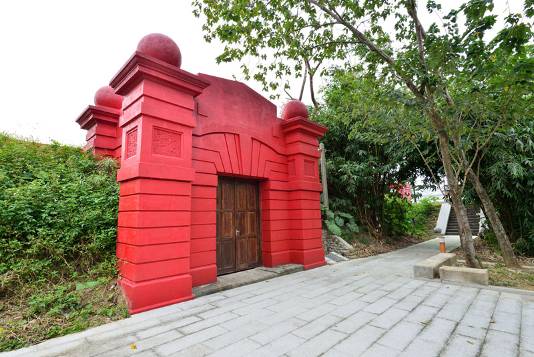觀音山蓄水池、配水井 Guanyinshan Reservoir and Distribution Well

蓄水池的蓄水量達5,050立方公尺,可供水至大稻埕地區。
This reservoir can hold water volume of up to 5,050m3, enough to supply the Dadaocheng area.
A "Metering Room," the building was made of brick and ferroconcrete, and its walls painted in red. There is a grassy area next to the building the size of two to three basketball courts. Taipei's oldest reservoir, Guanyinshan Reservoir, is located beneath. Since the reservoir was underground, the metering room was equipped with a rotary water gauge to measure the water level.
In addition, the "Distribution Well" next to the building was used to distribute the raw water. This well was located at the reservoir's final outflow location; the treated water traveled through this well to the metering room, then sent on to supply the urban district. This well was also equipped with a gate valve to control water volume so the natural gravitational flow could then be adjusted. Its role in water outflow to domestic households made this a crucial facility.
